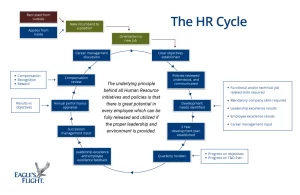Calculating ROI is one of the biggest hurdles decision-makers face when determining which leadership activities to include in organizational development and training initiatives. Although some metrics are more difficult to quantify than others, approaching leadership development with measurement in mind can help you identify the activities that will offer the best return on investment. When evaluating which leadership activities are the best fit for your organization, consider how each option contributes to the following.
Increasing Engagement
One of the first steps in any type of training is engaging participants. How does the leadership training you are considering compare to your current approach? You can measure and compare engagement by conducting feedback surveys both during and after training events. This is an important metric for training because when participants are not fully engaged, they are less likely to retain new information.
Learning for the Long Term
When you invest in leadership development or any other type of training, you want the new knowledge and skills they’ve acquired to last. This is challenging with all types of individuals because the forgetting curve indicates that people forget most of what they have learned in about a week. However, the rate of learning decay depends heavily on how the information was presented in the first place. For example, an individual might remember only 5 percent of the information delivered at a lecture, compared to 75 percent if they learn by doing, otherwise known as experiential learning. When selecting specific activities, make sure you have a mix of delivery types to promote engagement and therefore, longer-term learning.
Connecting to Real-life Application
Leadership activities that successfully convey the theories behind improving performance provide value, but the best ROI will happen only when those theories are applied in real life. Look for a training approach that includes on-the-job application as a key component. This might come in the form of hands-on training, role-playing, or a debrief of experiential learning activities. Tracking behavior change on the job will help you evaluate whether your organization’s leadership activities are producing the desired results.
Retaining Knowledge
In addition to selecting an information delivery method that promotes better retention, it’s important to reinforce new knowledge in order to combat learning decay. After participating in activities and connecting them to the workplace, implement a measurement and reinforcement plan to encourage participants to retain information and apply their new skills. When individuals know that their performance is being measured, they are more likely to strive to meet clear benchmarks, especially if they have recently learned new skills that will help them achieve those goals.
Impacting the Business
Perhaps the most important metric when determining the ROI of leadership activities is how the business is impacted. The specific objectives you choose to monitor will depend on your organizational goals, but might include:
- Decreasing the number of customer service complaints
- Increasing the productivity of teams
- Improving the efficiency of a specific process
- Decreasing the employee turnover rate
- Improving employee satisfaction
The methods used to calculate ROI will vary depending on the metrics you are measuring and they won’t always appear in terms of dollars and cents. For example, increasing engagement in these activities won’t directly translate to a financial return, but it is a key component of reaching your overall business goals. Regardless of your organizational development goals and the development initiatives you implement to support them, you won’t know whether you have achieved them unless you have a measurement system in place.












